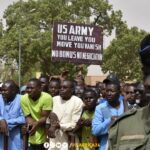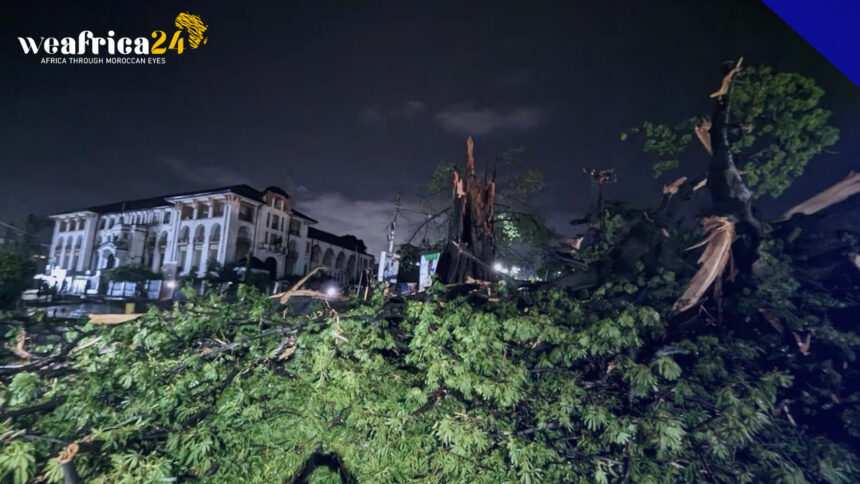In the wake of an intense rainstorm, an imposing arboreal giant that had graced Sierra Leone’s capital for countless centuries and embodied the cherished notion of liberation to its early inhabitants succumbed to the forces of nature, surrendering its majestic presence overnight.
As a multitude of onlookers congregated to witness the wreckage of the revered trunk, President Julius Maada Bio expressed profound sorrow over the demise of the renowned tree, acknowledging it as an immense loss to the entire nation.
Embodying profound historical significance, the esteemed “Cotton Tree” stood as the paramount landmark within the borders of the West African nation, a poignant testament to the establishment of the country by emancipated American slaves.
Nestled at the heart of a bustling roundabout in central Freetown, adjacent to the national museum and the seat of the presidency, stood the majestic kapok tree. Passerby Victor Tutu Rogers, recounting the dramatic events, revealed that he bore witness to the tree’s descent, occurring approximately at 9:40 p.m. (2140 GMT) on Wednesday, “As the wind howled and the rain intensified, I hurriedly navigated around the venerable cotton tree while returning from work, harboring concerns of impending branch dislodgment,” he recounted.
With swift efficiency, the remnants of scattered branches and debris were diligently removed by Thursday, leaving behind a solitary stump as the sole trace of the once commanding presence of the tree.
According to Festus Kallay, the Chief Administrator of the city, the tree’s significance extended far beyond its physical stature. “As a municipality, its symbolism held great significance, serving as the hallowed ground where we annually gather in November for our heartfelt thanksgiving ceremonies, as well as a sacred space for numerous other momentous events,” he remarked.







